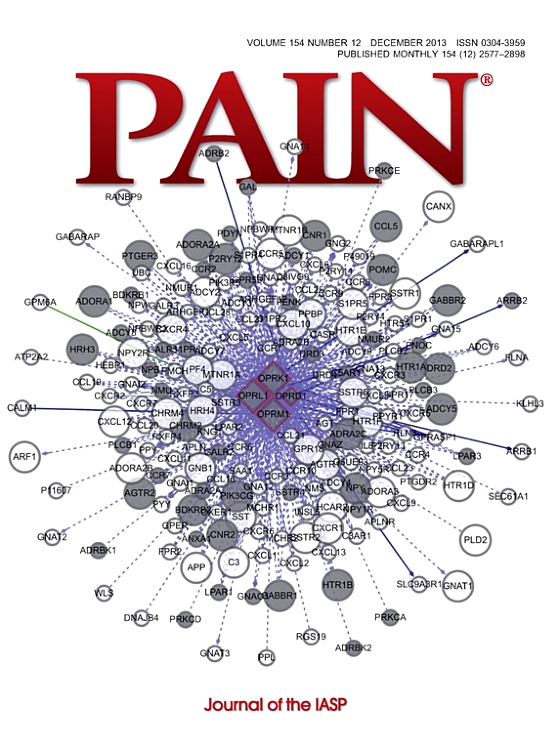与脊柱运动行为相关的疼痛相关恐惧的任务特异性测量与一般测量:系统回顾和荟萃分析。
IF 5.5
1区 医学
Q1 ANESTHESIOLOGY
引用次数: 0
摘要
肌肉骨骼疼痛,特别是腰背部和颈部疼痛,与脊柱运动行为(SMB)的不适应变化有关。与疼痛相关的恐惧等心理因素在推动这些适应方面发挥了作用。虽然之前的研究发现一般心理测量和SMB之间的微弱关联,但特定任务的测量可能会提供更精确的运动回避的见解。本系统回顾和荟萃分析旨在比较一般和任务特异性疼痛相关恐惧测量与SMB的相关关系。根据PRISMA指南,我们纳入了13项研究(651名参与者),评估了一般(运动恐惧症的坦帕量表和疼痛焦虑症状量表)和特定任务的测量以及客观的脊柱运动结果(如振幅、速度、肌肉活动、协调性、变异性)。三水平荟萃分析模型显示,一般测量与SMB之间存在弱但显著的关联(r = 0.12, 95% CI: 0.04-0.21, P = 0.007),而任务特定测量显示出更强的关联(r = 0.29, 95% CI: 0.18-0.40, P < 0.001)。这些相关性之间的差异(Δr(特定任务-一般任务)= 0.16,95% CI: 0.04至0.27,P = 0.008)具有统计学意义,表明特定任务的测量方法更好地捕捉到感知恐惧和运动改变之间的关系。尽管方法上存在异质性,但我们的研究结果强调了任务特异性评估在理解与疼痛相关的恐惧相关的运动障碍方面的重要性。这些结果支持在临床和研究环境中整合特定任务的评估。为了进一步阐明心理因素与SMB之间的联系机制,未来的研究应采用纵向设计,提高所研究的运动任务的情境效度,并探索新的运动分析方法。本文章由计算机程序翻译,如有差异,请以英文原文为准。
Task-specific vs general measures of pain-related fear relative associations with spinal motor behaviour: a systematic review and meta-analysis.
Musculoskeletal pain, particularly low back and neck pain, is associated with maladaptive changes in spinal motor behaviour (SMB). Psychological factors such as pain-related fear play a role in driving these adaptations. While previous research found weak associations between general psychological measures and SMB, task-specific measures may provide more precise insights into movement avoidance. This systematic review and meta-analysis aimed to compare the relative associations of general and task-specific pain-related fear measures with SMB. Following PRISMA guidelines, we included 13 studies (651 participants) assessing both general (Tampa Scale of Kinesiophobia and Pain Anxiety Symptoms Scale) and task-specific measures alongside objective spinal motor outcomes (eg, amplitude, velocity, muscle activity, coordination, variability). A three-level meta-analytic model revealed a weak but significant association between general measures and SMB (r = 0.12, 95% CI: 0.04-0.21, P = 0.007), whereas task-specific measures showed a stronger association (r = 0.29, 95% CI: 0.18-0.40, P < 0.001). The difference between these correlations (Δr(task-specific - general) = 0.16, 95% CI: 0.04 to 0.27, P = 0.008) was statistically significant, indicating that task-specific measures better capture the relationship between perceived fear and movement alterations. Despite methodological heterogeneity, our findings highlight the importance of task-specific assessments in understanding motor impairments associated with pain-related fear. These results support the integration of task-specific evaluations in clinical and research settings. To further elucidate the mechanisms linking psychological factors to SMB, future studies should use longitudinal designs, improve the contextual validity of the motor tasks studied, and explore new approaches of movement analysis.
求助全文
通过发布文献求助,成功后即可免费获取论文全文。
去求助
来源期刊

PAIN®
医学-临床神经学
CiteScore
12.50
自引率
8.10%
发文量
242
审稿时长
9 months
期刊介绍:
PAIN® is the official publication of the International Association for the Study of Pain and publishes original research on the nature,mechanisms and treatment of pain.PAIN® provides a forum for the dissemination of research in the basic and clinical sciences of multidisciplinary interest.
 求助内容:
求助内容: 应助结果提醒方式:
应助结果提醒方式:


